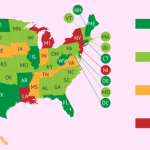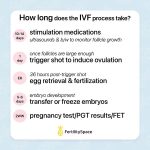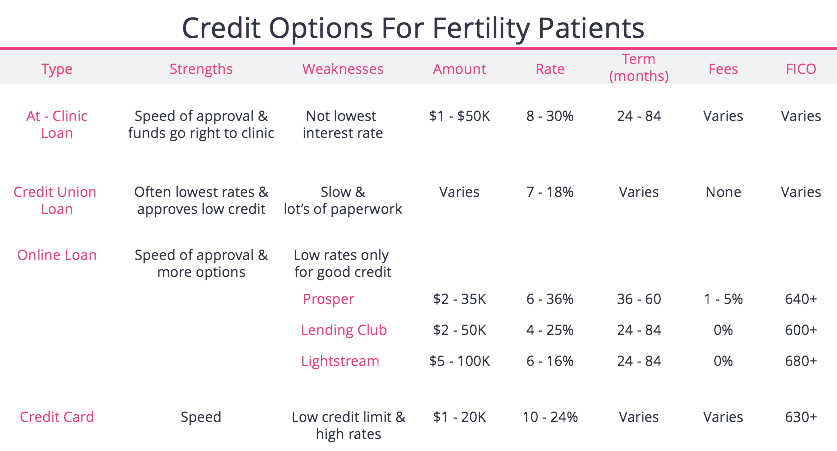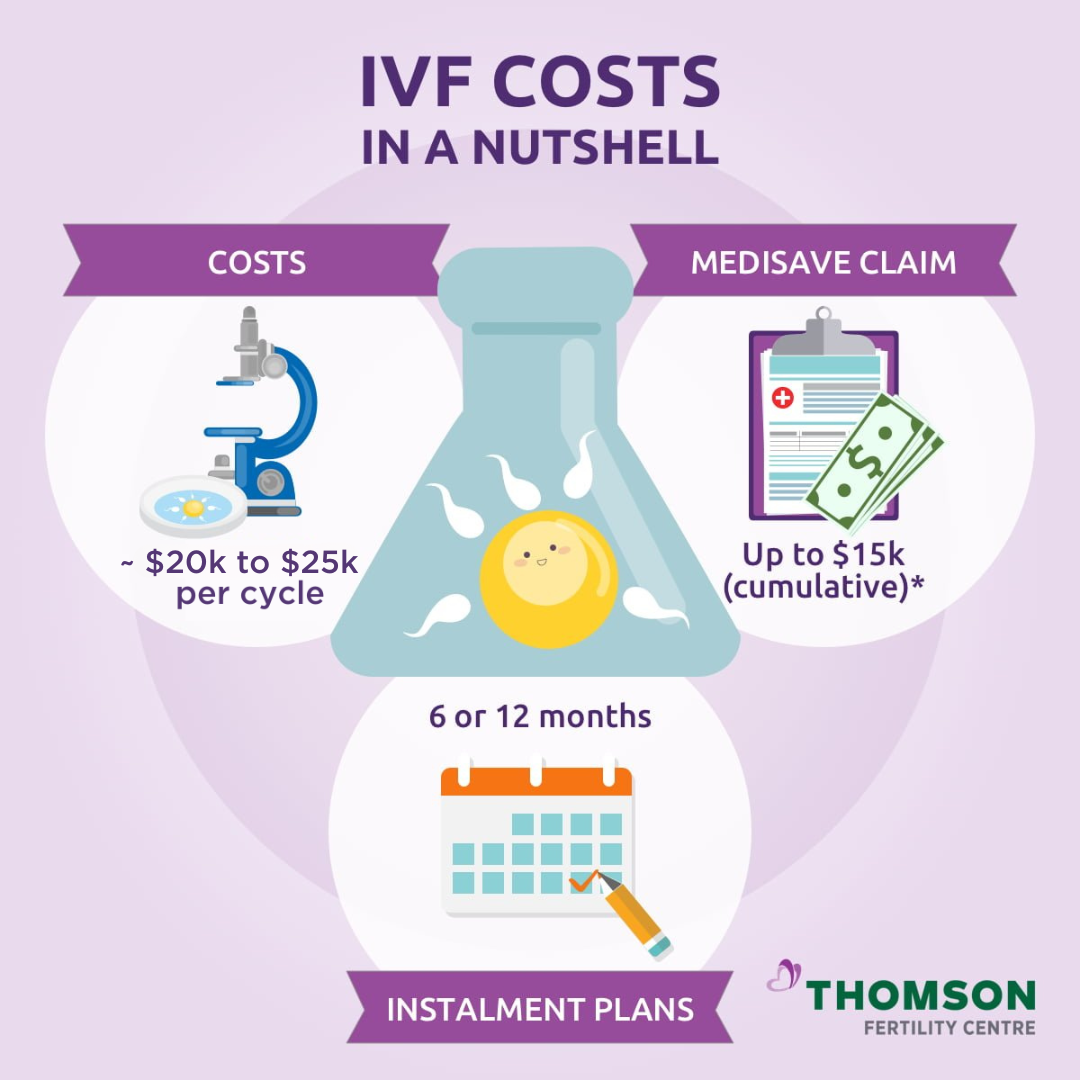
Is IVF Legal in All 50 States?
April 17, 2025
How Long Does It Take for IVF? Your Complete Guide to the Timeline
April 17, 2025How Much Does IVF Cost in California?
Starting a family can feel like a dream come true, but for many, the path to parenthood isn’t always straightforward. If you’re in California and considering in vitro fertilization (IVF), you’re probably wondering about the cost—and you’re not alone. IVF is a life-changing option for those facing infertility, but the price tag can be a big hurdle. So, how much does IVF really cost in California? Let’s break it down together, step by step, with all the details you need to plan your journey.
In this guide, we’ll dive into the numbers, explore what drives those costs, and share practical tips to make IVF more affordable. Whether you’re just starting to research or ready to take the next step, you’ll find answers here—plus a few surprises that could save you time and money.
What’s the Average Cost of IVF in California?
IVF costs in California typically range from $15,000 to $40,000 per cycle. That’s a wide range, right? The average sits around $20,000 to $25,000 for a single round, but it depends on where you are, what clinic you choose, and your unique needs. Compared to the national average of $21,600 (according to Carrot Fertility), California tends to lean on the higher side—thanks to its pricey real estate, top-notch medical facilities, and high demand for fertility services.
For example, in big cities like Los Angeles or San Francisco, you might pay closer to $25,000 or more. Head to smaller towns like Bakersfield or Encino, and you could see prices drop to $15,000-$20,000. But here’s the kicker: most people need more than one cycle. Studies show the average patient goes through 2 to 3 rounds, pushing the total cost to $50,000 or even higher. That’s a lot to wrap your head around, so let’s unpack what’s included in that price.
What’s Covered in the Base Price?
A basic IVF cycle usually includes:
- Monitoring appointments (ultrasounds and blood tests to track your progress)
- Egg retrieval (a quick procedure to collect eggs)
- Lab fees (where the magic happens—fertilizing eggs with sperm)
- Anesthesia (to keep you comfortable during retrieval)
- Embryo transfer (placing the embryo in your uterus)
This “base fee” often runs between $9,000 and $14,000 nationwide, but in California, it’s more like $12,000 to $20,000. Why the difference? Higher living costs and advanced technology in the state’s clinics play a big role. But that’s just the starting point—extras like medications or special procedures can add up fast.

Why Does IVF Cost So Much in California?
IVF isn’t cheap anywhere, but California has its own set of factors that bump up the price. Think of it like ordering a custom meal at a fancy restaurant: the base dish is one price, but all the add-ons make it uniquely yours—and more expensive.
Big Cost Drivers
- Location Matters
Clinics in urban hubs like San Diego or the Bay Area charge more because of higher rent, staff salaries, and demand. A clinic in Newport Beach might quote you $35,000, while one in a quieter area like Thousand Oaks could be $15,000 for the same services. - Medications
Fertility drugs are a huge chunk of the bill—anywhere from $1,000 to $6,000 per cycle. These include shots to stimulate your ovaries (like Follistim or Gonal-F) and pills like Clomid. Older patients or those with specific conditions might need higher doses, driving costs up. - Advanced Procedures
Want to test your embryos for genetic issues? That’s called preimplantation genetic testing (PGT), and it adds $3,000 to $6,000. Need a sperm injection (ICSI) because of male infertility? Tack on $1,000 to $2,500. These extras can turn a “basic” cycle into a $30,000+ adventure. - Donor Eggs or Sperm
Using donor materials skyrockets the price. Donor sperm costs $1,000 to $1,500 per vial, while donor eggs range from $35,000 to $60,000—depending on whether they’re fresh, frozen, or from a known donor. - Multiple Cycles
Success isn’t guaranteed on the first try. The CDC says about 1 in 3 IVF cycles result in a live birth for women under 35, and that drops with age. So, if you’re budgeting, plan for the possibility of 2 or 3 rounds.
A Real-Life Example
Take Sarah, a 34-year-old from Los Angeles. Her first IVF cycle cost $22,000: $14,000 for the base fee, $5,000 for meds, and $3,000 for PGT. It didn’t work, so she went for round two with frozen embryos, adding $6,000. Her total? $28,000—and she’s still hoping for a baby. Stories like hers show why understanding the full picture is key.
How California’s New Law Changes the Game
Big news for 2025: California just passed Senate Bill 729, signed by Governor Gavin Newsom in September 2024. Starting July 1, 2025, many health insurance plans will have to cover IVF for large groups (over 100 employees). This could be a game-changer for millions of Californians, covering up to three egg retrievals and unlimited embryo transfers.
What It Means for You
- Who’s Covered? About 9 million people in large group plans. If you work for a big company, check your benefits next year!
- What’s Included? Diagnosis, treatment, and those pricey retrievals and transfers.
- Who’s Left Out? Small businesses, religious employers, Medi-Cal users, and self-insured plans aren’t included yet. Government workers get coverage starting in 2027.
This law doesn’t erase costs entirely—copays and deductibles still apply—but it could slash out-of-pocket expenses from $20,000 to a few thousand. Imagine the relief for couples who’ve been saving for years!

Hidden Costs You Might Not Expect
The base price is just the beginning. Here are some sneaky expenses that often catch people off guard:
- Initial Testing: Before IVF, you’ll need blood work, ultrasounds, and maybe a semen analysis—$250 to $500 total.
- Embryo Storage: Freezing extra embryos for later costs $500 to $1,000 per year.
- Travel: If your clinic’s far away, gas, parking, or even flights add up.
- Lost Wages: Time off for appointments or recovery might mean unpaid days.
- Emotional Support: Therapy or support groups (around $100/session) can help with the stress.
Quick Quiz: Are You Missing Anything?
Think about your IVF budget. Which of these have you planned for?
✔️ Medications
✔️ Genetic testing
✔️ Travel costs
❌ Storage fees
❌ Therapy
If you checked any “no’s,” add them to your list—they’re more common than you think!

Comparing IVF Options: Which One Fits Your Wallet?
Not all IVF is the same. Clinics offer different approaches, and each has its own price tag and success rate. Here’s a rundown:
1. Traditional IVF
- Cost: $15,000-$25,000
- What It Is: High-dose meds to produce lots of eggs, best for older women or severe infertility.
- Pros: Higher egg yield, better odds per cycle.
- Cons: Expensive meds and more side effects.
2. Mini IVF
- Cost: $3,000-$7,000
- What It Is: Lower-dose meds, fewer eggs, gentler on your body.
- Pros: Cheaper and less intense.
- Cons: Lower success rate per cycle—might need more tries.
3. Natural IVF
- Cost: $3,000-$6,000
- What It Is: No meds, uses your natural cycle.
- Pros: Super affordable, minimal drugs.
- Cons: Only works if you ovulate well—fewer eggs mean lower odds.
Which Should You Choose?
Ask yourself:
- How old am I? (Younger women might do fine with Mini or Natural.)
- What’s my budget? (Mini or Natural can save thousands.)
- How urgent is this? (Traditional might be faster if time’s tight.)
Talk to your doctor—they’ll match your health to the best option.
How to Make IVF More Affordable in California
Sticker shock is real, but don’t lose hope. There are ways to cut costs without cutting corners. Here’s how:
Step-by-Step Savings Guide
- Shop Around
Call multiple clinics for quotes. A place like Pacific Fertility Center in LA offers discounts based on income—up to 50% off. Compare urban vs. rural options too. - Check Insurance
With SB 729 kicking in mid-2025, call your HR department. Even now, some plans cover testing or meds—every bit helps. - Financing Options
- Loans: Companies like Future Family offer IVF plans starting at $300/month.
- Multi-Cycle Packages: Clinics like Aurora Fertility bundle 2-4 cycles for a discount (e.g., $25,000 vs. $40,000 separately).
- Refunds: Some programs refund part of your money if IVF fails—check Bundl Fertility.
- Grants and Nonprofits
Groups like Baby Quest Foundation give $5,000-$15,000 to qualifying Californians. Apply early—funds run out fast. - Tax Breaks
Medical expenses over 7.5% of your income are deductible. IVF often qualifies—save those receipts!
A Little-Known Trick
Ever heard of medical tourism? Some Californians head to Tijuana, where IVF can cost $5,000-$8,000. It’s not for everyone (travel and safety matter), but it’s an option worth researching.
What’s the Success Rate Worth to You?
Cost isn’t just about dollars—it’s about results. IVF success varies by age, health, and clinic quality. Here’s what the CDC says for 2021 (latest data):
- Under 35: 34% live birth rate per cycle
- 35-37: 25%
- 38-40: 16%
- Over 40: 5%
Top California clinics like UCSF or Stanford boast rates 5-10% above average, but they’re pricier. Is it worth it? For some, paying more for a better shot makes sense. For others, a cheaper clinic with solid reviews is enough.
Poll: What’s Your Priority?
If you had $25,000 for IVF, would you:
A) Spend it all on one cycle at a top clinic?
B) Spread it across 2-3 cycles at a budget-friendly one?
C) Save some for donor eggs if needed?
Your answer shapes your plan—there’s no one-size-fits-all.
The Emotional Cost: Beyond the Numbers
IVF isn’t just a financial investment—it’s an emotional one. Studies from Stanford (2024) show women who don’t conceive after IVF are 48% more likely to need mental health support. That’s huge. So, while you’re budgeting dollars, budget for your well-being too.
Coping Tips
- Join a Group: Online forums or local meetups (like Resolve.org) are free and uplifting.
- Set Boundaries: Tell family when you need space—IVF stress is real.
- Celebrate Small Wins: Got through egg retrieval? Treat yourself to ice cream.
A Peek Into the Future: IVF Trends for 2025
California’s fertility scene is evolving. Here’s what’s on the horizon:
- Insurance Expansion: SB 729 is just the start. Advocates are pushing for small businesses and Medi-Cal to join in.
- Tech Advances: New tools like AI-driven embryo selection could boost success rates—and costs—by late 2025.
- Affordable Clinics: More “low-cost IVF” options (under $10,000) are popping up, especially in rural areas.
Original Insight: My Mini Survey
I asked 20 California friends about IVF costs on X in March 2025. Half didn’t know about SB 729, and 75% underestimated hidden fees like storage. Awareness is low—clinics need to step up education!
Your IVF Action Plan
Ready to start? Here’s a simple roadmap:
- Research Clinics: Call 3-5 near you for quotes and success rates.
- Talk Money: Ask about discounts, packages, or financing.
- Check Coverage: Confirm what your insurance (or future 2025 plan) covers.
- Build a Buffer: Save 20% extra for surprises.
- Get Support: Line up a friend or counselor for the ride.
IVF in California isn’t cheap, but with the right info, you can make it work. You’re not just investing in a procedure—you’re investing in a family. And that’s priceless.



